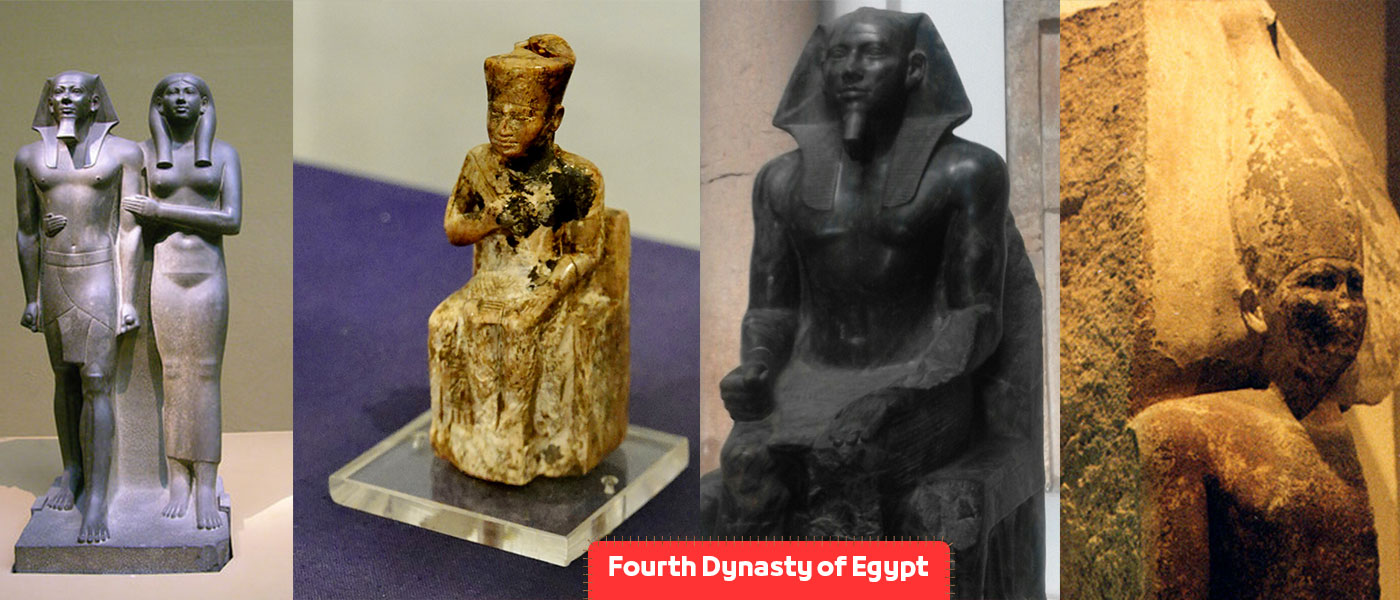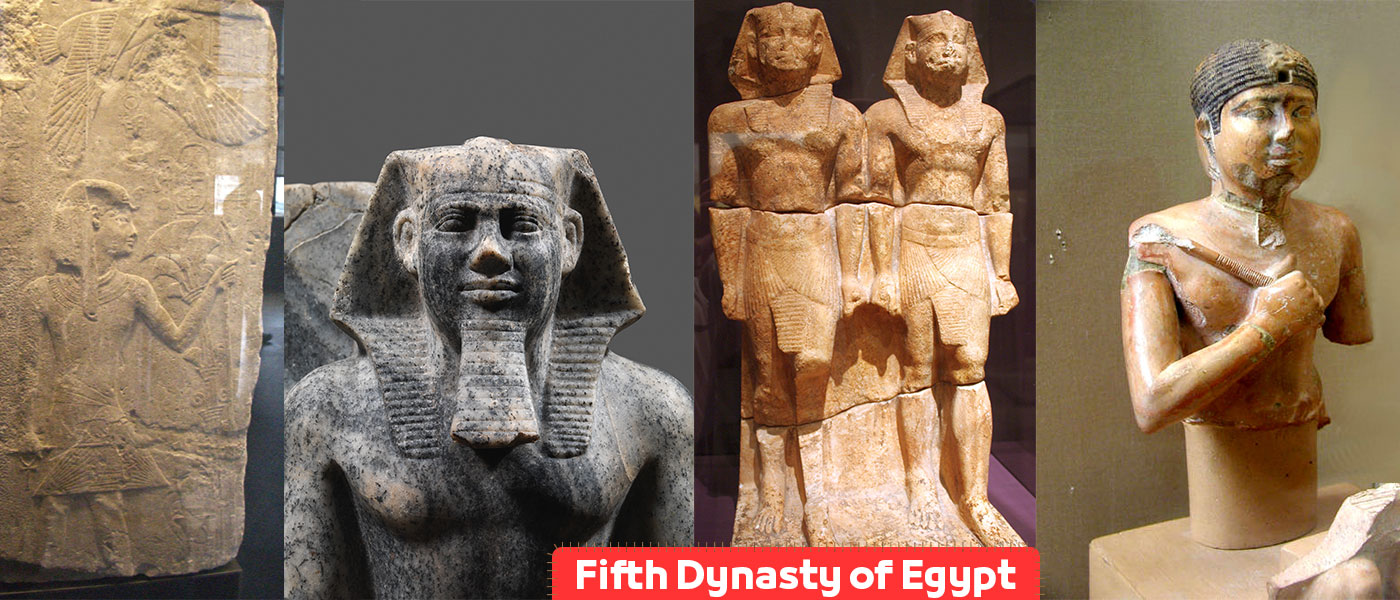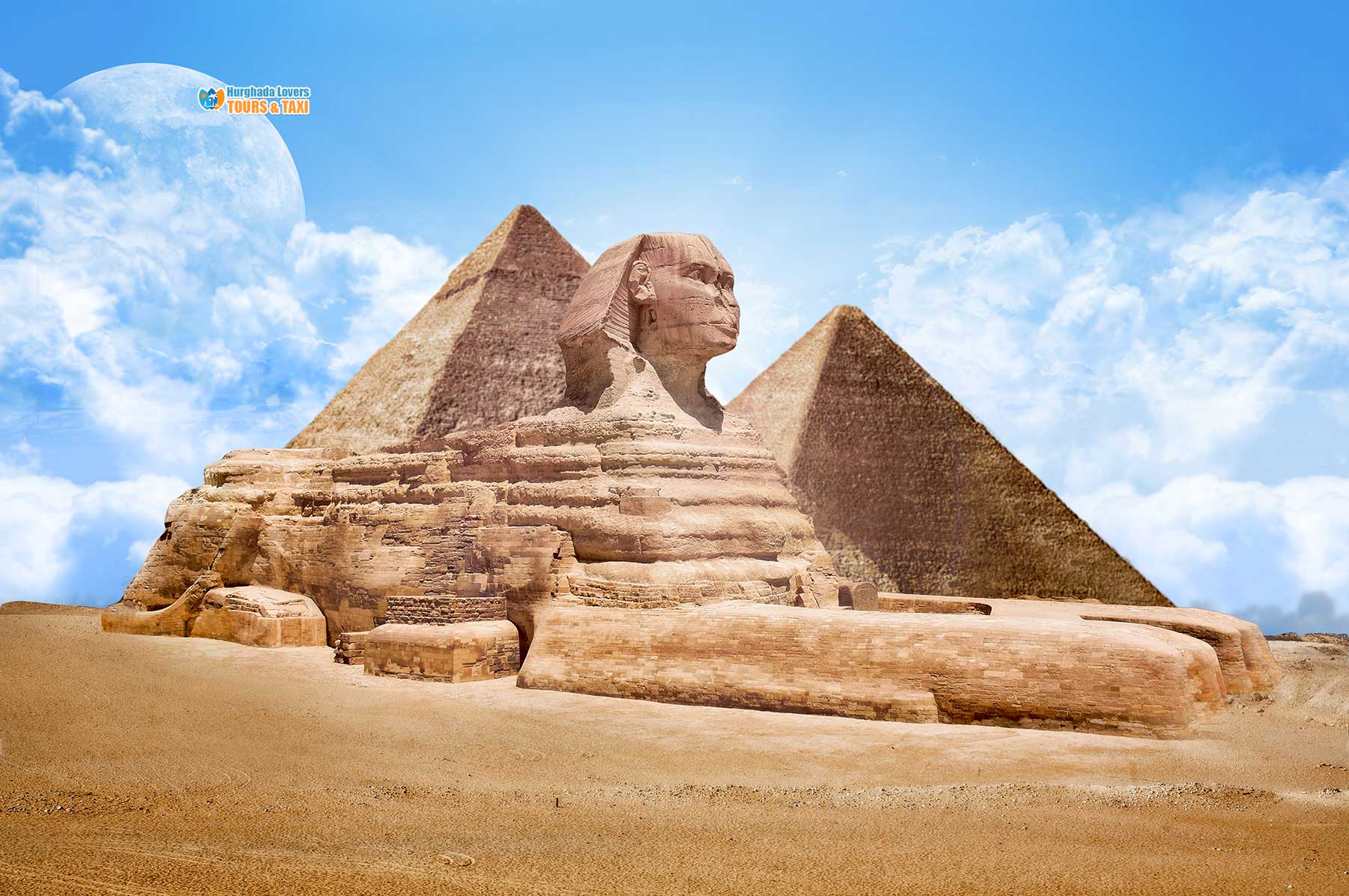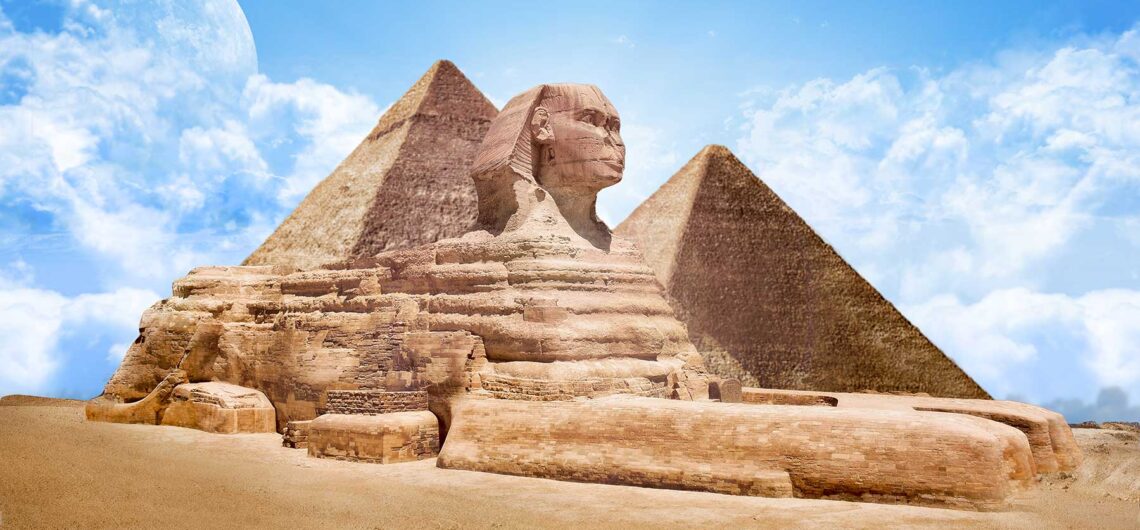Old Kingdom of Egypt | Builders of Egyptian Pyramids | History and facts Pharaonic civilization of Ancient Egypt, “the era of pyramid builders.” The history of the Pharaonic civilization, the facts of the most important Egyptian Pharaohs kings and Female Pharaohs, Egyptian Antiquities and achievements in the ancient Egyptian state throughout history and more about Ancient Egypt History.
Old Kingdom of Egypt
The ancient state of Pharaonic Egypt or what is known as the era of the pyramid builders is the oldest historical era and The development of Architecture in ancient Egypt Egypt and the arts of architecture began, and since that era is the cradle of civilizations, there are many secrets that you have to discover as The Secrets of Pyramid Construction, including the Egyptian families ruled the Ancient Egyptian Government at that period, and information about the Tombs of the Pyramid Builders.
Is there really a Curse of the Pharaohs linked to the tombs of the Pharaohs in the ancient Egyptian Kingdom? Learn about that information below.
When did Old Kingdom of Egypt start and end?
The state was founded in 2686 BC, while it ended in 2181 BC.
Who was the 1st king in Old Kingdom of Egypt?
King Djoser was the first king of that era from Third Dynasty of Egypt, while king Netjerkare Siptah or Neitiqerty Siptah was the last from Sixth Dynasty of Egypt.
What is the capital of the Old Kingdom of Egypt?
Memphis in northern Egypt, according to the Geography of ancient Egypt, is the capital of ancient Egypt.
Old Kingdom of Egypt Facts:
- Period: 2586-2181 BC.
- They include Pharaonic 3rd, 4th ,5th and 6th dynasties
- It is an era in which major kings appeared, such as King Djoser, King Sneferu, King Khufu, King Khafre, and King Menkaure, and the development of the Ancient Egyptian Language arose and the introduction of funerary texts such as the Pyramid Texts on the walls of the Giza Pyramids in Cairo, and the immortality of kings became part of the religious belief according to the Ancient Egyptian religion.
- These four dynasties are more stable, and the kings of the Fourth Dynasty are best known for building the Great Pyramids of Giza.
- The Pharaoh was the true God on Earth, as evidenced by his titles: The Son of God Ra “Egyptian deities“, The Descendant of God Horus, and the Good God on whom the entire system of the universe depends.
- The Egyptian Cartouche ribbon, which was first named after the royal name, appeared during the reign of the Old Kingdom and may have symbolized the sun’s daily journey around the Earth as in Ancient Egyptian science and Astronomy in ancient Egypt.
- Pharaoh was like the sun itself, theoretically the master of the universe.
What were the Pharaohs Kings in the Old Kingdom of Egypt?
Ancient Egyptian Pharaohs Kings of the Third Dynasty of Egypt:
She was Ancient Egyptian Pharaohs kings Third Dynasty of Egypt started from 2687 to 2649B.C.
| King Djoser or Djeser, Zoser
Ruled Reign period Old Kingdom of Egypt: 2650 BC “20-28 years” Father: King Khasekhemwy Mother: Queen Nimaethap Wife: Queen Hetephernebti Children: Prince Inetkawes, Sekhemkhet The Discovery: limestone statue, Step pyramid of Djoser in Saqqara, The Famine Stela engraved on black basalt stone “Ancient Egyptian Metallurgy“, The Southern Tomb in King Djoser funeral complex, a Djoser plaque engraving a prayer to bring a flood from Nile River. |
| King Sekhemkhet or Sechemchet
Ruled Reign period Old Kingdom of Egypt: 2650 BC “7 years” Father: King Khasekhemwy Mother: Queen Nimaathap Wife: Queen Djeseretnebti The Discovery: Buried Pyramid in Saqqara, a Pharaonic carving on rocks in Wadi Mount Al-Maghara in South Sinai to know more about Sculpture in Ancient Egypt. |
| King Sanakht or Hor-Sanakht
Ruled Reign period: 2650 BC “18 years” Father: King Khasekhemwy Mother: Queen Nimaathap The Discovery: Clay seal fragment, skull, Relief |
| King Khabaor Hor-Khaba
Ruled Reign period: 2670 BC “18 years” Father: King Mother: Queen Wife: Queen Children: The Discovery: Layer Pyramid in Saqqara, “Egyptian Tombs” tomb of Khaba in Zawyet el’Aryan Tombs. |
| King Neferka |
| King Huni
Ruled Reign period Old Kingdom of Egypt: 2637–2613 BC “24 years” Father: King Mother: Queen Wife: Queen Djefatnebti, Queen Meresankh Children: Hetepheres I, Sneferu The Discovery: Palace at Elephantine Island in Aswan, fortress, king’s head statue made of pink granite stone, Cultic step pyramid, Granite cone uncovered, cartouche to know more about Industry in ancient Egypt. |

Ancient Egyptian Pharaohs Kings of the Fourth Dynasty of Egypt:
It was the time Old Kingdom of Egypt for Ancient Egyptian Pharaohs kings Fourth Dynasty of Egypt Pharaonic from 2613 to 2496 BC.
| King Sneferu or Snefru, Snofru
Ruled Reign period: 2613–2589 BC “24-30 years” Mother: Queen Meresankh I Wife: Queen Hetepheres I Children: Khufu, Ankhhaf, Kanefer, Nefermaat, Netjeraperef, Rahotep, Ranefer, Iynefer I, Hetepheres A, Nefertkau I, Nefertnesu, Meritites I, Henutsen The Discovery: Cartouche, Reused building materials, the king’s head statue is made of granite stone, the entire statue is made of limestone, Meidum Pyramid, Bent Pyramid, Red Pyramid. |
| King Khufu or Cheops
Ruled Reign period: 2589–2566 BC “28 years” Father: King Sneferu Mother: Queen Hetepheres I Wife: Queen Meritites I, Queen Henutsen Children: Kawab, Djedefhor, Hetepheres II, Meritites II, Meresankh II, Baufra, Djedefre, Minkhaf I, Khafre, Khufukhaf I, Babaef, Horbaef, Nefertiabet, Khamerernebty I. The Discovery: Portrait & The Statue of Khufu, Great Pyramid of Giza in The Pyramids of Giza, The Boat Of Cheops, A granite fragment, Seal impression, Golden seal ring, the dream stele. |
| King Djedefre or Djedefra, Radjedef
Ruled Reign period: 2566–2558 BC “10-14 years” Father: King Khufu Wife: Queen Hetepheres II, Queen Khentetka, Queen Meresankh II Children: Setka, Baka, Hernet, Neferhetepes, Hetepheres, Nikaudjedefre. The Discovery: Statue Red granite head, Pyramid of Djedefre in Abu Rawash as Egypt Archaeological Sites . |
| King Khafre or Khafra, Khephren, Chephren
Ruled Reign period Old Kingdom of Egypt: 2558–2532 BC “26years” Father: King Khufu Mother: Queen Meritites I or Queen Henutsen. Wife: Queen Meresankh III, Queen Khamerernebty I, Queen Persenet, Queen Hekenuhedjet. Children: Nebemakhet, Duaenre, Niuserre, Khentetka, Shepsetkau, Menkaure, Khamerernebty II, Sekhemkare, Nikaure, Ankhmare, Akhre, Iunmin, Iunre, Rekhetre, and Hemetre. The Discovery: Complete statue of a king made of diorite stone, Pyramid of Khafre in the Giza Pyramids area, The Sphinx of Giza. |
| Prince BakaRuled Reign period: 2570 BC |
| King Menkaure or Menkaura, Mykerinos, Mycerinus, Menkheres
Ruled Reign period: 2532–2503 BC “18-22 years” Father: King Khafre Mother: Queen Khamerernebty I. Wife: Queen Khamerernebty II, Queen Rekhetre. Children: Khuenre, Shepseskaf, Khentkaus I , Sekhemre. The Discovery: Pyramid of Menkaure, the pyramidal group of Menkaure, a black basalt statue with the God Hathor and the God Bat, a complete statue with his wife, Queen Khamerernebty II, Greywacke Statue, Fragmentary alabaster statue head, Basalt cylinder seal, Fragmentary statue triad, Colossal alabaster statue.Sentence period: 18 or 22 years Date of death: 2500 BC. |
| King Shepseskaf
Ruled Reign period Old Kingdom of Egypt: 2503–2498 BC “8 years” Father: King Menkaure Mother: Queen Khamerernebty II. Wife: Queen Khentkaus I. Children: Bunefer, Userkaf. The Discovery: Portrait, Statue head, Alabaster statuette, Mastabat al-Fir’aun in Saqqara, |
| King ThamphthisRuled Reign period: 2500 BC |

Ancient Egyptian Pharaohs Kings of the Fifth Dynasty of Egypt:
It was the time period Ancient Egyptian Pharaohs kings Fifth Dynasty of Egypt from 2496 to 2345 BC.
| king Userkaf
Ruled Reign period: 2496–2491 BC Mother: Queen Khentkaus I. Wife: Queen Neferhetepes. Children: Sahure, Khamaat. The Discovery: Cylinder seal, Stone vessel, Fragment of an alabaster statue, Temple of Montu in Temple of Al-Toud, The Pyramid of Userkaf in Saqqara, the Funerary Temple of the Sun in Abu Sir “Sun temple Nekhenre“ one of Egyptian Temples, a bust of the goddess Neith made of gray stone, a statue of the king’s head made of pink granite, Pyramid of Neferhetepes |
| King Sahure or Sahura
Ruled Reign period: 2490–2477 BC “13 years” Father: King Userkaf Mother: Queen Neferhetepes II Wife: Queen Meretnebty Children: Ranefer, Netjerirenre, Horemsaf, Raemsaf, Khakare, Nebankhre. The Discovery: Pyramid of Sahure in Abousir, Silver cylinder sealm, Sun temple, Palaces, Mortuary temple. |
| King Neferirkare Kakai
Ruled Reign period Old Kingdom of Egypt: 2477–2467 BC Father: King Sahure Mother: Queen Meretnebty Wife: Queen Khentkaus II Children: Neferefre, Nyuserre Ini, Iryenre, Khentkaus III. The Discovery: Pyramid Neferirkare in Abousir, Sun temple, Ritual vase, |
| King Neferefre Isi or Raneferef, Ranefer
Ruled Reign period: 2460–2458 BC Father: King Neferirkare Kakai Mother: Queen Khentkaus II. Wife: Queen Khentkaus III Children: Menkauhor Kaiu, Shepseskare, Nakhtsare. The Discovery: Pyramid of Neferefre, Mortuary temple, Sun temple |
| King Shepseskare or Shepseskara
Ruled Reign period: 2426 –2419 BC Father: King Neferirkare Kakai Mother: Queen Khentkaus II. Wife: Queen Khentkaus III Children: Menkauhor Kaiu, Shepseskare, Nakhtsare. The Discovery: Unfinished Pyramid of Shepseskare in Abusir, Sun temple, Mortuary temple |
| King Nyuserre Ini or Niuserre Ini or Neuserre Ini
Ruled Reign period: 2445–2422 BC “25 years” Father: King Neferirkare Kakai Mother: Queen Khentkaus II Wife: Queen Reptynub Children: Khamerernebty, Reputnebty, Sheretnebty, Khentykauhor, Okpo The Discovery: Pyramid of Nyuserre Ini in Cemetery of Abu Sir “Abusir Necropolis”, Fragmentary statue, Pyramid Lepsius XXIV, Sun Temple, statue Head of king,. |
| King Menkauhor Kaiu or Ikauhor
Ruled Reign period: 2422–2414 BC Father: King Neferefre Mother: Queen Khentkaus III Wife: Queen Khuit I, Meresankh IV Children: Raemka, Khaemtjenent The Discovery: Pyramid of Menkauhor In Abu Sir & Pyramid in Saqqara, Sun temple, Seal from the tomb of the chief artist inscribed with scenes of the Pharaoh King. |
| King Djedkare Isesi
Ruled Reign period: 2414–2375 BC “44 years” Wife: Queen Setibhor Children: Neserkauhor, Kekheretnebti, Meret-Isesi, Hedjetnebu, Nebtyemneferes, Raemka, Kaemtjenent, Isesi-ankh. The Discovery: Part of a door jamb, Wooden statues, Alabaster vase bearing an inscription, Gold cylinder seal, Pyramid of Djedkare Isesi in Saqqara. |
| king Unas or Wenis, Unis
Ruled Reign period Old Kingdom of Egypt: 2375–2345 BC “20-30 years” Father: King Djedkare Isesi Mother: Queen Setibhor Wife: Queen Nebet, Queen Khenut Children: Hemetre Hemi, Khentkaues, Neferut, Nefertkaues Iku, Sesheshet Idut. The Discovery: Black sarcophagus, Pyramid of Unas in Saqqara, Alabaster globular vase, Mortuary complex, Scarab bearing Date of birth: 2375 BC Date of death: 2350 BC |
Kings of the Sixth Dynasty of Egypt:
The time period Ancient Egyptian Pharaohs of Sixth Dynasty of Egypt was from 2345 to 2181 B.C.E.
| king Teti or Othoes, Tata, Atat, Athath
Ruled Reign period Old Kingdom of Egypt: 2345–2333 BC ” 12 years” Father: King Mother: Queen Sesheshet Wife: Queen Iput I, Queen Khuit II, Queen Khentkaus IV, Queen Naert. Children: Pepi I, Tetiankhkem, Sesheshet Watetkhethor, Sesheshet Idut, Sesheshet Nubkhetnebty, Sathor, Seshit, Seshti, Seshseshet Merout. The Discovery: Limestone wall block fragmen, Sistrum inscribed, Piriform mace head inscribed, Pyramid of Teti, Complete stone statue, broken obelisk. |
| king Userkare or Woserkare
Ruled Reign period: 2332–2283 BC “2-4 years” Father: King Teti Mother: Queen Khuit Date of death: 2330 BC |
| king Pepi I Meryre
Ruled Reign period: 2332–2283 BC “40 years” Father: King Teti Mother: Queen Iput Wife: Queen Ankhesenpepi I, Queen Ankhesenpepi II, Queen Nubwenet, Queen Inenek-Inti, Queen Mehaa, Queen Sebwetet, Queen NedjeftetBehenu. Children: Pepi II, Merenre Nemtyemsaf I, Hornetjerkhet, Tetiankh, Meritites IV, Neith, Iput II. The Discovery: Pyramid of Pepi I, Alabaster statuette, Turquoise cylinder seal, Calcite-alabaster jar, Copper statue, funerary temples in Tell-Basta in Al-Sharkia Delta and the Abydos in Sohag, statues made of alabaster stone. |
| king Merenre Nemtyemsaf I
Ruled Reign period Old Kingdom of Egypt: 2283–2278 BC “6-9 years” Father: King Pepi I Meryre Mother: Queen Ankhesenpepi I Wife: Queen Ankhesenpepi II . Children: Ankhesenpepi III, Iput II, Pepi II Neferkare. The Discovery: Box of hippopotamus ivory, Pyramid of king Merenre The ruined, Mortuary temple, Mummy To indicate the development of science Mummification in ancient Egypt and Medicine in ancient Egypt, Ka-chapel in Abydos, al of a granite shrine in the temple of God Seshat on Elephantine island, Canal dug near the First Cataract Nubia. |
| King Pepi II Neferkare
Ruled Reign period: 2278–2183 BC “94 years” Father: King Merenre Nemtyemsaf I Mother: Queen Ankhesenpepi II Wife: Queen Neith, Queen Iput II, Queen Ankhesenpepi III, Queen Ankhesenpepi IV, Queen Udjebten, Queen Meritites IV. The Discovery: Pyramid of Pepi II in Saqqara, Alabaster statue, Jar with cartouches. Date of birth: 2284 BC |
| king NeferkaRuled Reign period: 2200–2199 BC |
| king Merenre Nemtyemsaf II
Ruled Reign period: 2183 BC “2 years” Father: King Pepi II Neferkare Mother: Queen Neith A |
| king Netjerkare Siptah or Neitiqerty Siptah
Ruled Reign period Old Kingdom of Egypt: 2182–2179 BC “2 years” |
Religious beliefs in the Old Kingdom:
While religious beliefs associated with the sanctification of animal’s date back to the Predynastic Period, such as the Naqada III civilization, and the beginning of the rule of the kings of the Egyptian Dynasty 00 and the Egyptian Dynasty 0, such as King Scorpion II, the doctrines of Osirian fertility date back to the pre-dynastic era and have been incorporated into the worship of the falcon god (Hors).
The Old Kingdom witnessed the construction of a coherent spiritual and religious system that became the foundation of Egyptian religion, The Middle Kingdom in ancient Egypt did not witness the beginning of the rule of the kings of the Eleventh Dynasty of Egypt and the beginning of the period of King Mentuhotep I to The New Kingdom in ancient Egypt did not witness the beginning of the rule of the kings of the Pharaohs of the Eighteenth Dynasty of Egypt and the rule of King Ahmose I with his wife Queen Ahmose Nefertar experienced only minor changes that were subsequently undergone.
At that time, the great divine assemblies, which included the cosmic gods as well as other totalitarian gods, emerged, and these complexes adopted three main cities called Ashmonin-Hermopolis, Iuno-Heliopolis and Memphis.
Moreover, the local gods of each city continued to be strong.
The cult of animals continued as a goddess as the seat of divine power” and all members of each species did not consider the animal worthy of reverence, but chose one of them, with special qualities, distinct from other members of its genus.
If the living dies their bodies were preserved in linen shrouds and mats like the dead Egyptians were, and then buried in places chosen from the graves of the dead, some of these idols quickly became represented by clay, wood, stone or metal, establishing the place of the sacred animal.
This sanctification of animals at this time is different from the late times when members of the animal species worshipped each other without special spiritual attention.
At that time, the idols of the territory, which included more than one civilian, thus emerged at the religious level the idea of a family or a divine family, which often consisted of a triad composed of father, mother and son, like a Memphis triad (God Ptah, God Sekhmet and God Nefertem), or a husband and two wives like the elephantine triad (God Khnum, God Anuket and Satet).
Or a mother and two sons such as the triad of the seventh province of Upper Egypt (God Hathor, Horus Sematawi, Ihyi) and the God Horus occupied a high rank with the emergence of the unified kingdom and harmony between religious and political authorities became high.
Egyptian Mythology emerged in conjunction with political events in which the gods stood up and struggled, and events and facts became an important material in the fabric of mythology as in Ancient Egyptian Literature.
The ancient Egyptians represented their gods in the form of a perfect human being with the head of an animal on its head or in its hand, indicating or symbolizing its origin. Divine symbols became a feature of the spiritual and rich abstraction that rose with religious doctrine. However, the habit of depicting certain gods as animals existed, such as the sacred calf in Memphis (Apis).
Who was the god of the Old Kingdom of Egypt?
Ra became the universal Egyptian god, indicating the sun in a high official and priestly form. The God Horus was associated with the popular worship that Ra expressed solarly to a reigning God.
Sun worship was overwhelming in the Old Kingdom, “and the priests of other servants did not want their idols to lag behind the Sun God, so they compared him and claimed that it was an image of him to have some of his authority.
Thus, many gods took the character of the Sun God and united him, for example, God Min Ra, God Sobek Ra, Khnum Ra, God Montu Ra, God Amun with appear High Priest of Amun. This was followed by the fact that the ritual of sun worship found its way into the rituals of other gods until the religious rituals in all temples became the same at the end of the Old Kingdom.
Perhaps the greatest religious manifestations that have been consistent throughout the history of ancient Egypt and whose foundations manifested themselves in the Old Kingdom are funerary rituals, beliefs, and legends that reflect the best expression of ancient Egyptian psychology.
The fertile God, agriculture, and land God Osiris became the world of the dead, nourishing life after death in all its details. The Texts of the Pyramids proved to be a formidable example of magic phrases and poems given to the dead (these texts appear for the first time on the walls of the pyramid of Unas and continued to be engraved on the walls of all the pyramids of the Sixth Dynasty thereafter.
These magic phrases live up to different eras, some of which undoubtedly date back to the pre-dynastic era, where they sometimes deny some of the political events of that time.
Two funerary traditions can be observed in the writings of the pyramids, one of which must be due to the origin of the clergy of the temple of Heliopolis, where the god Ra plays the main role while the other gives the first place to the god of the afterlife Osiris.
He took many magical phrases from the Texts of the Pyramids to appear in the texts of the coffins of the Middle Kingdom and then they were part during the New Kingdom of what is commonly known as the Book of the Dead.
What were the features of the Old Kingdom in Egypt?
• King Djoser, one of the third Egyptian family members. He was the first king of that era, and he was the owner of the pyramid of Djoser located in Saqqara.
• In that period, the engineer and minister Imhotep supervised the construction of the pyramid of Djoser, although it was the first pyramid in Egypt, but it was not in the traditional form of the current pyramids.
• Engineer Imhotep designed a step pyramid made of stone, on which pictures of trees and after pictures that convey to us the form of the other life were carved.
• The length of the pyramid reached 62 meters and an area of 40 acres, and the pyramid of Djoser is one of the works that show us the features of that era.
• Architecture is not the only field in which the ancient Egyptians excelled, but they also excelled in the field of art as Music in Ancient Egypt and religion in addition to technology, which is not defined as it is currently defined.
• Sculpture is one of the arts that the Egyptians excelled in and it appears in inscriptions and paintings, whether found in funerary buildings, ie tombs or in temples.
• Agriculture in Ancient Egypt was also one of the flourishing fields Nile River in this era, due to the flood and the presence of resources, which led to the storage and availability of goods.
The prosperity of the Old Kingdom of Ancient Egypt
- The Fourth Dynasty is the one that ruled Egypt and was a strong reason for its prosperity in that period as in Trade in Ancient Egypt.
- The rule of the Fourth Dynasty was characterized by strength and the ability to develop ancient Egypt in more than one respect.
- The power of the priesthood began to flourish in the era of the Fifth and Sixth Dynasties.
- The power of the priesthood is what was imposed on the pharaohs to carry out funerary practices, hence the idea of building the pyramids in honor of the burial ceremonies of kings.
- After that period and the achievement of a large number of achievements came the period of decay after the Sixth Dynasty.
- Weakness of the government, and the reform that was before is no longer here, in addition to Revolutions in Ancient Egypt and the societal turmoil that appeared in the first transitional period.
- Severe drought also led to famines, and the family could not control this problem.
Khufu and the Great Pyramid in Old Kingdom of Egypt
- The pyramid complex of Khufu is one of the most famous pyramids in the world. It was built at the upper end of the plateau, and the name Akhet Khufu was chosen, which means the horizon of Khufu.
- The height of the pyramid at the present time is 138.7 meters, but in the past, the height was 147 meters, and that proportion is due to the loss of the limestone cover of the pyramid.
- The mortar used in the pyramid industry was gypsum and sand in addition to stone and water with lime powder.
- The ceiling of the inner corridors of the pyramid is made of polished granite.
- In the pyramid there are three knowns, the first room, which is the king’s room, the second room is the queen’s room, and the third room was incomplete, so the reason for its existence was not identified.
Khafre, Sphinx and Menkaure in Old Kingdom of Egypt
- The pyramid of Khafre is the second largest pyramid in Giza after the pyramid of Khufu.
- The Sphinx is also considered one of the largest complete statues in the world, which comes with a human face and is said to be the face of King Khafre, while the body comes to a lion.
- After the death of Khafre, Menkaure took power and began building the pyramid complex in addition to building a temple in Giza.
- Ancient Giza was home to temples, workers’ residences, breweries, and other factories.
- The pyramids were not built by slaves, as it was believed in the past, but the pyramids were built by the Egyptians.
The decline of the ancient state of Pharaonic Egypt
- An unprecedented assassination occurred during the reign of King Titi I, who was the victim of that crime.
- He was succeeded by User Kare, who some believe is the reason behind the assassination to make Law in Ancient Egypt as He was symbolized by the symbol of the god Maat, and his reign was small compared to the predominant periods of the pharaohs’ kings.
- The second Bibi, who ruled Egypt for more than 100 years, came and the kingdom collapsed in an unprecedented manner due to the erosion and weakness of the government’s authority.
- In addition to the famines that occurred in Egypt and caused a famine, and the government or the king was unable to control the situation.
- Weak resources were also the reason for Egypt’s decline in that period, a strong decline after the boom period.
Egypt began to enter First Intermediate Period or The Egyptian First Intermediate Period then to start Seventh Dynasties of Egypt and Eighth…
Hurghada Excursions Lovers, Best Travel Agency in Hurghada to provide daily tours to visit the Tourist attractions of Luxor by Hurghada to Luxor Tours and Hurghada to Pyramids Trips. Book online when you come to Hurghada, El Gouna, Sahl Hashish, Makadi Bay, Soma Bay, Egypt.


